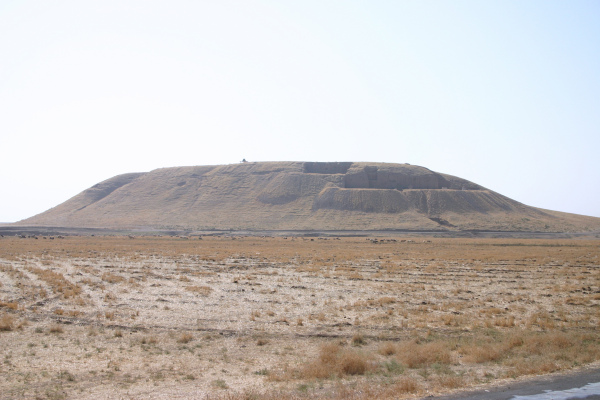Archeologists use a term, “tell,” which originates in Arabic as “تَلّ” meaning a small hill or mound.
These are not naturally occurring hills. Rather, they are formed when a community lives in the same place for so long, generation after generation, that their refuse—food and animal waste, building materials, etc—is deposited and builds up faster than it can be eroded by wind and rain. New houses are built atop the ruins of the old, year after year.
They’re found primarily in southwest Asia, thanks to the often arid conditions there (and hence the borrowing from Arabic), but they’re also found in parts of Europe and Africa.
Some of them are truly massive, reaching up to 43 meters in height. That’s thousands of years’ worth of habitation, compressed in layer atop layer. Archeologists can excavate these sites (those that don’t have modern cities built atop them) and see how communities evolved from the Neolithic to the Iron Age.
https://en.m.wikipedia.org/wiki/Tell_(archaeology)
These are not naturally occurring hills. Rather, they are formed when a community lives in the same place for so long, generation after generation, that their refuse—food and animal waste, building materials, etc—is deposited and builds up faster than it can be eroded by wind and rain. New houses are built atop the ruins of the old, year after year.
They’re found primarily in southwest Asia, thanks to the often arid conditions there (and hence the borrowing from Arabic), but they’re also found in parts of Europe and Africa.
Some of them are truly massive, reaching up to 43 meters in height. That’s thousands of years’ worth of habitation, compressed in layer atop layer. Archeologists can excavate these sites (those that don’t have modern cities built atop them) and see how communities evolved from the Neolithic to the Iron Age.
https://en.m.wikipedia.org/wiki/Tell_(archaeology)
Ten wpis został zedytowany (8 miesiące temu)
RDudostępnił to.


HeavenlyPossum
•And here these farmers sat, year after year, millennia after millennia, in one place. These were people working with the same Neolithic agricultural package, growing the same sorts of wheat and raising the same sorts of sheep, in the fields around their tells.
They did not die out. They did not exhaust their soils to extinction. Many of them—especially the tells in the Danube Basin that constitute “Old Europe”—developed no states, as some people believe is inevitable from wheat cultivation. If they did leave, they left for reasons unrelated to the success of their way of life. But, as I noted, some of these tells are still inhabited, like the central citadel of Aleppo in Syria.
We don’t have to wonder if there’s something intrinsically destructive about the process of agriculture in general. They did it. They lived it. They are the proof.
RDudostępnił to.
Callan
•HeavenlyPossum
•Yes! This is such a great example.
William Canna-bass
•Neolithic farmers used crop rotation, intercropping, and likely no-till to preserve the soil.
Extinction Studies
•mizblueprint
•Mux2000 (powered down)
•HeavenlyPossum
•Yup! Lots of tells in Israel and Palestine.